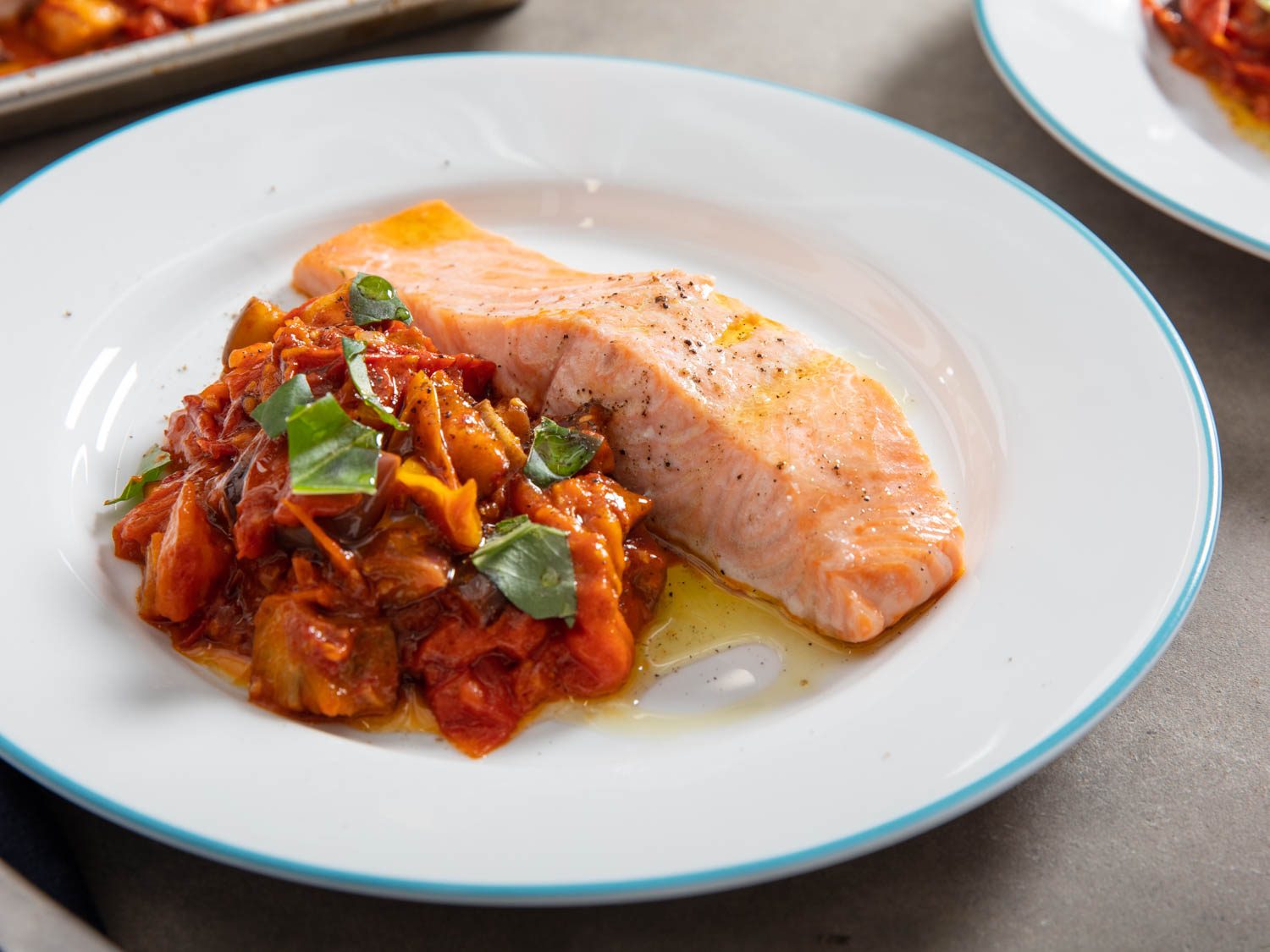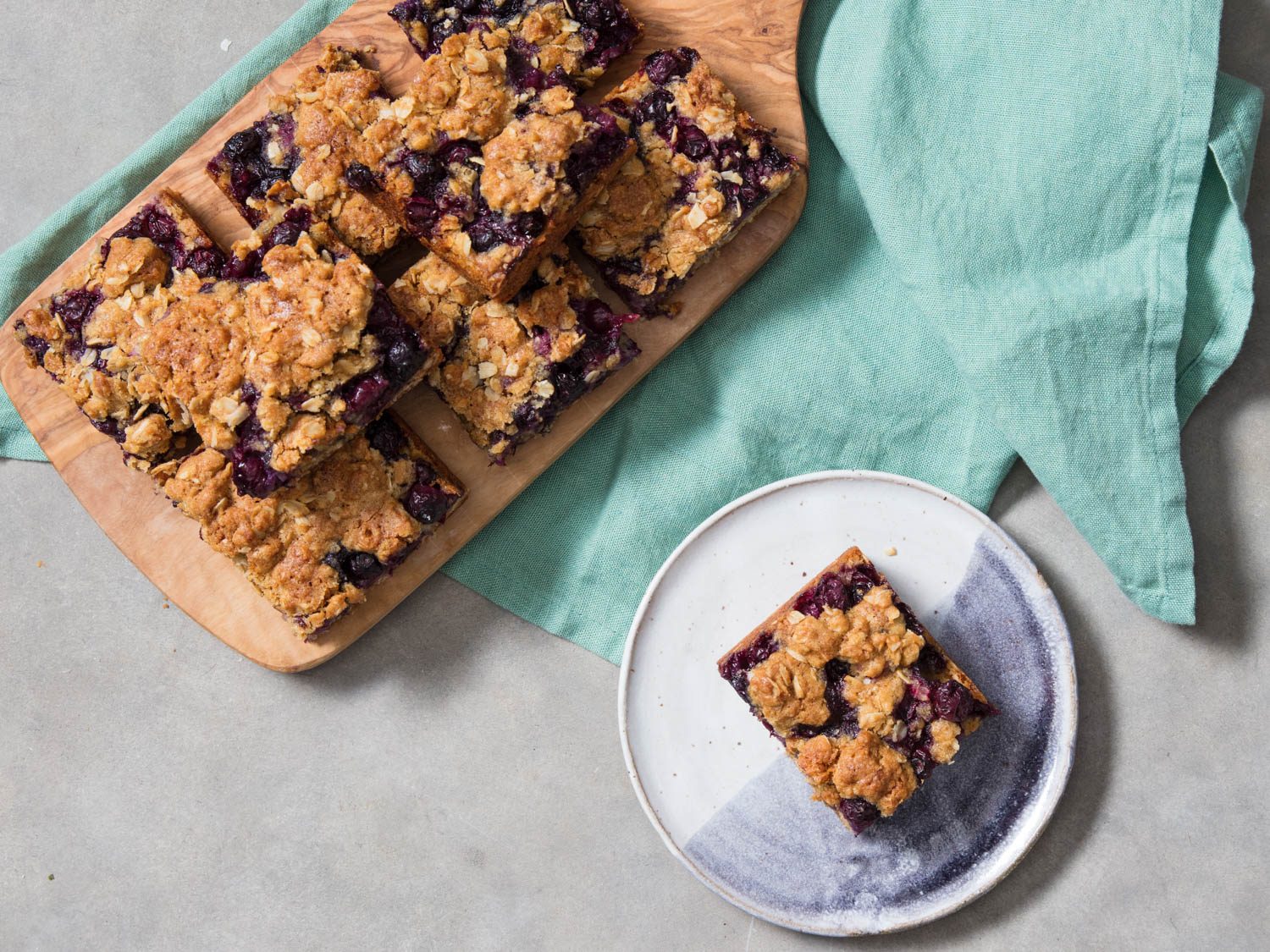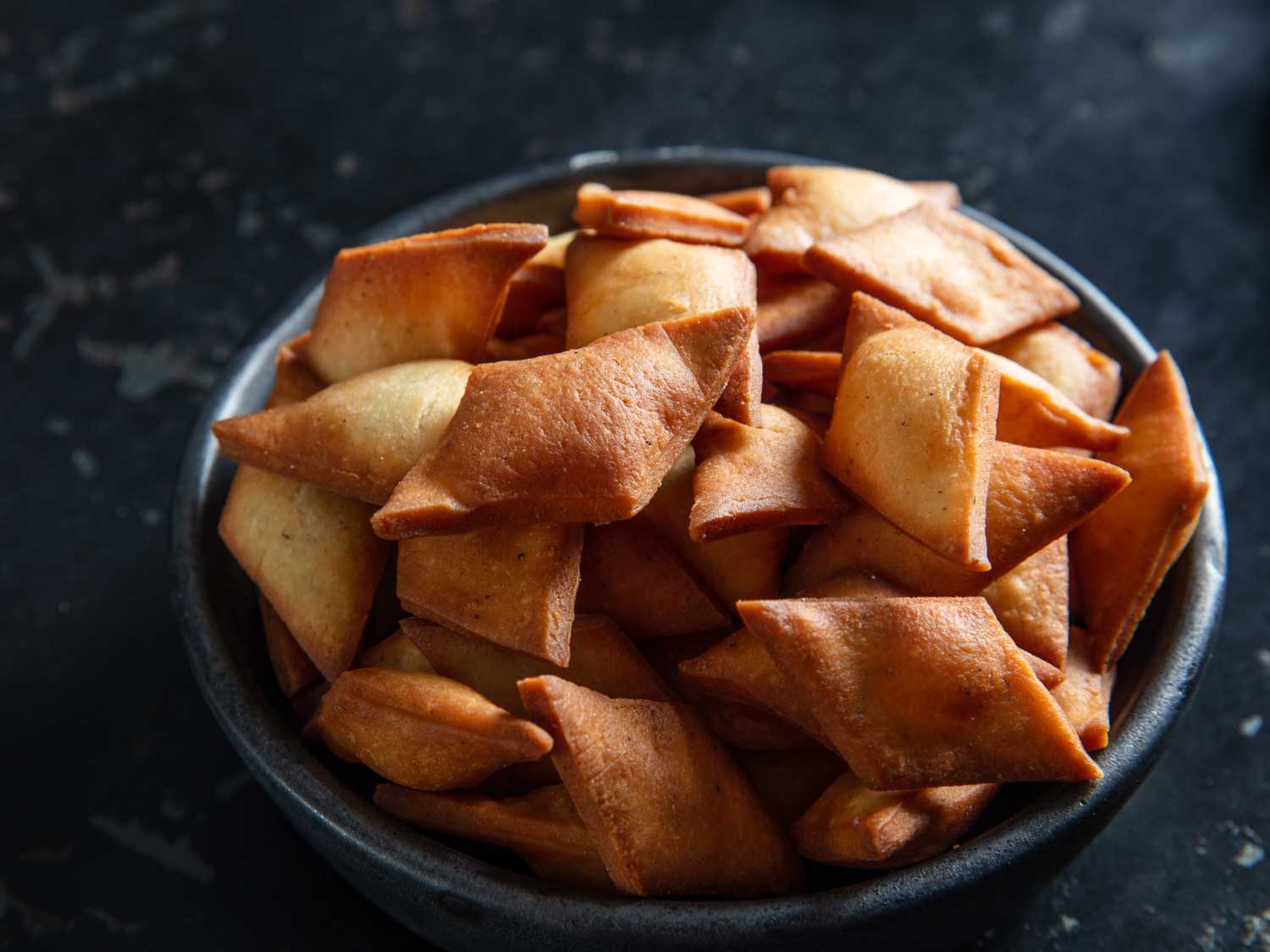Sheet-Pan Salmon With Tomato-Eggplant Compote

[Photographs: Vicky Wasik]
Making a vegetable stew like the tomato-eggplant compote in this sheet-pan salmon recipe may not seem like the kind of thing one can easily whip up on a baking sheet, but with attention to just a few key details, it’s very doable. There are three things to pay attention to in order to pull it off successfully.
The first is the sequence of events. If you were to add the garlic at the very beginning, it would be at greater risk of scorching while the tomatoes initially roast; add it too late and you won’t have the chance to sizzle and coax its flavor into the oil. To avoid such trouble, we start by roasting the tomatoes until they show the first signs of splitting, then add the garlic, cooking it for a few more minutes to develop its flavor. Then we crush some of those tomatoes, so that their juices spread and protect the garlic from scorching as the newly added eggplant starts to cook.
Just as important is positioning ingredients thoughtfully on the baking sheet. When we add the garlic, we do it in the center of the sheet, which is less hot than the corners and edges. This ensures the juicy tomatoes take the brunt of the heat while the garlic sizzles more slowly in the middle. As we add more ingredients, we shift things around, pushing the crushed tomatoes and garlic to one side to make room for the eggplant and then pushing things over again when the salmon goes on. This thoughtful use of space allows ingredients to sizzle and brown when they need to, and not when they don’t.
Lastly, we remain at the ready to add water as needed throughout the cooking process to any areas that appear to be at risk of scorching. Water lowers the heat of any area that appears to be browning too quickly, allowing us to prevent burning only as much as is needed. Some browning, though, is good, developing deeper and more complex flavors in the compote—something the wide surface area of the baking sheet allows to happen more quickly than a pot or Dutch oven would.
To add even more depth and complexity to the compote, we reach for a few tablespoons of gochujang. The Korean chili paste adds a gentle heat, fermented umami depth, and a glossy texture, thanks to corn or rice syrup (which syrup depends on the specific brand you buy, but results will be good either way).
The result is an easy weeknight dinner of salmon fillets with an accompanying compote that’s silky and delicious, with a flavor that suggests a lot more ingredients and effort went into it than actually did.
Published at Tue, 28 Jan 2020 07:45:55 +0000



